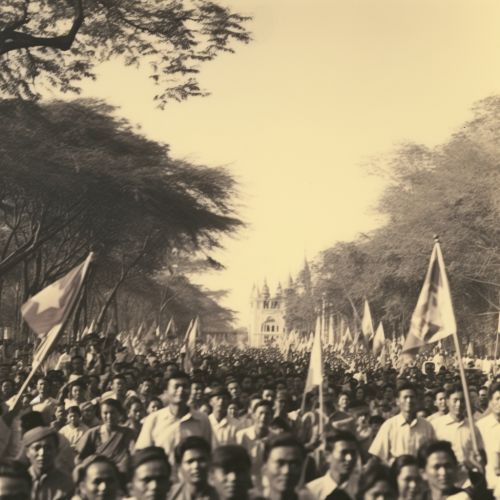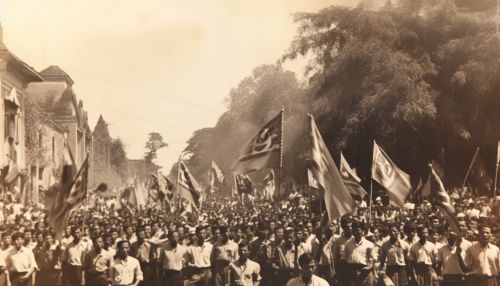Burmese Independence
Background
The independence of Burma (now Myanmar) was a process that took place over several decades, beginning in the early 20th century and culminating in the country's full independence from British rule on January 4, 1948. This process was marked by a series of political, social, and military events that shaped the course of the nation's history and its present-day identity.


Early Nationalist Movements
The roots of Burmese independence can be traced back to the late 19th and early 20th centuries, when the first nationalist movements began to emerge in response to British colonial rule. These movements were primarily led by intellectuals, monks, and other influential figures who sought to preserve Burmese culture and identity in the face of increasing British influence.
One of the earliest and most significant of these movements was the General Council of Burmese Associations (GCBA), founded in 1906. The GCBA was instrumental in promoting Burmese nationalism and advocating for greater autonomy within the British Empire.
The Road to Independence
The path to independence was marked by several key events, including the Burmese Student Strike of 1920, the formation of the Dobama Asiayone ("We Burmans Association") in 1930, and the Panglong Agreement of 1947.
The Student Strike of 1920 was a significant turning point in the independence movement. It marked the first time that students had become actively involved in the struggle for independence, and it led to the formation of the All Burma Students’ Union (ABSU).
The Dobama Asiayone, founded by a group of young intellectuals, played a crucial role in the independence movement. The association was committed to achieving full independence for Burma and was responsible for the creation of the Thakin movement, which would later form the backbone of the independence struggle.
The Panglong Agreement, signed on February 12, 1947, was a historic accord between Burmese nationalist leaders and ethnic minority leaders. The agreement laid the groundwork for a unified Burma and set the stage for the country's eventual independence.
Independence and Aftermath
On January 4, 1948, Burma officially gained independence from Britain. The newly independent nation faced numerous challenges, including ongoing ethnic conflicts, political instability, and economic difficulties.
Despite these challenges, the independence of Burma marked a significant milestone in the country's history. It represented the culmination of decades of struggle and the beginning of a new chapter in the nation's ongoing journey towards self-determination and national identity.
